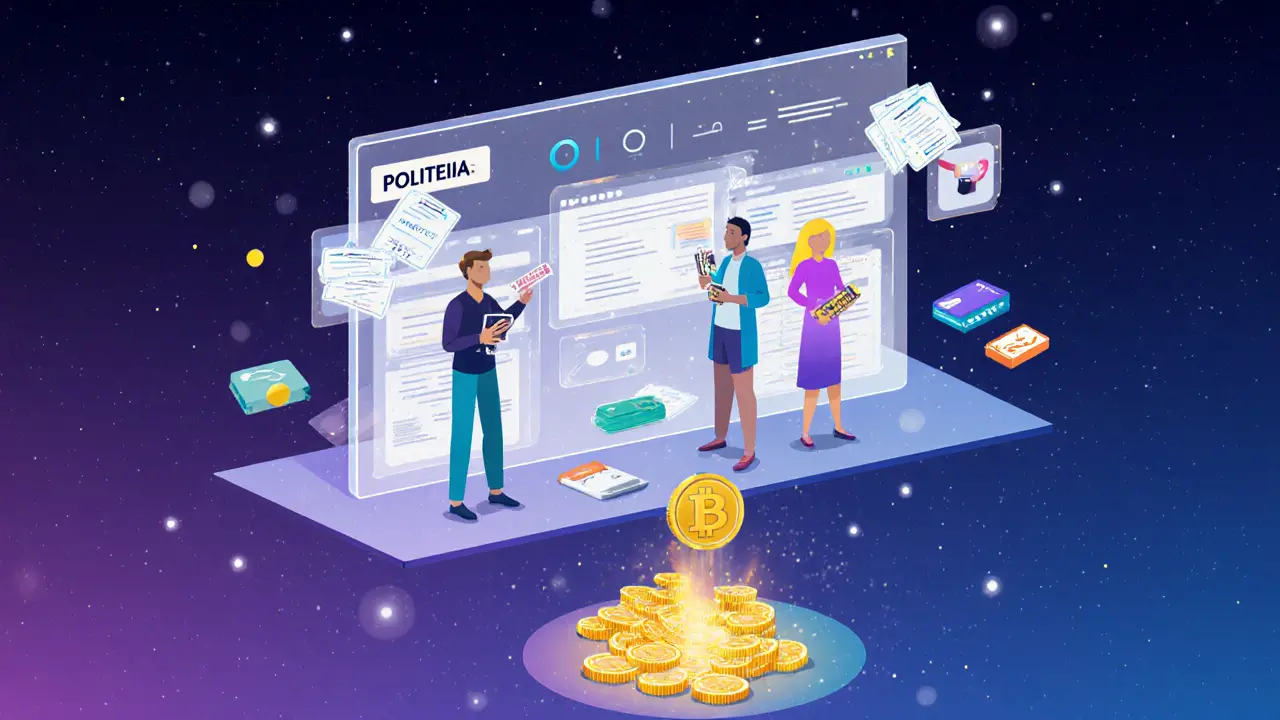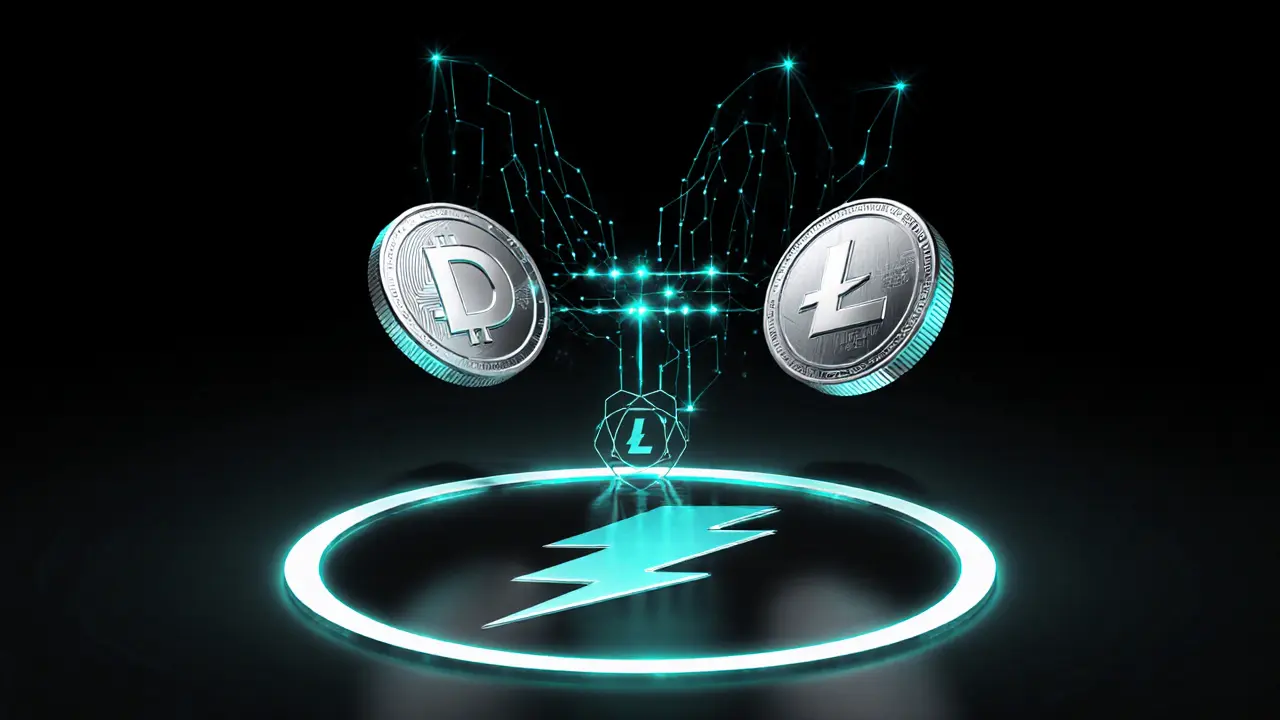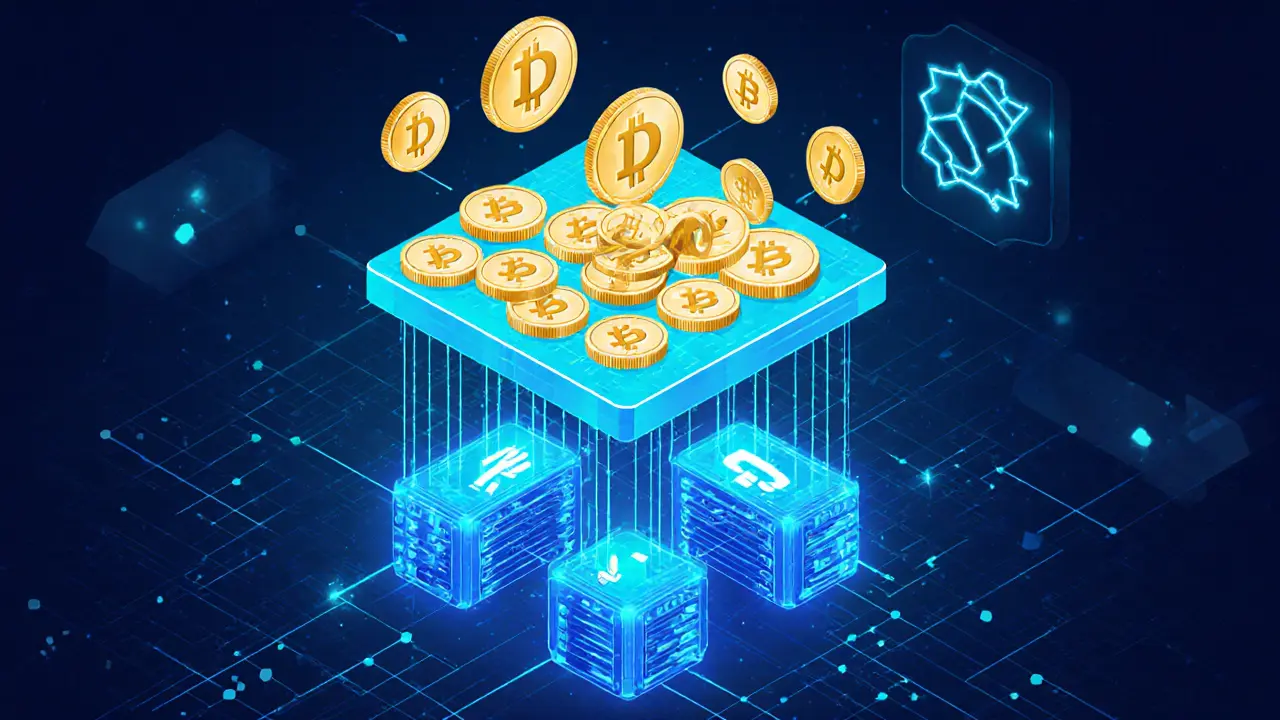Decred Staking Reward Calculator
Estimated Annual Rewards
Decred isn’t just another cryptocurrency. It was built by Bitcoin developers who saw a problem: too much power in the hands of miners and developers, and no real way for everyday holders to shape the future of the network. Launched in February 2016, Decred (DCR) answers that problem with a system that gives voting power to people who hold and stake the coin - not just those who own mining rigs. This isn’t theory. It’s live, working, and has been running without a single successful 51% attack in nearly a decade.
How Decred Works: The Hybrid Consensus Model
Most cryptocurrencies pick one way to secure their network. Bitcoin uses Proof-of-Work (PoW). Ethereum switched to Proof-of-Stake (PoS). Decred does both - and that’s where it gets interesting.Every block on the Decred blockchain requires two things: computational work (PoW) and stakeholder votes (PoS). Miners solve complex math problems using BLAKE-256 hashing, just like Bitcoin. But before a block is accepted, five randomly selected stakeholders - people who’ve locked up their DCR as tickets - must vote to approve it. If they don’t agree, the block is rejected. This creates two layers of security. An attacker would need to control both the majority of mining power and a large chunk of staked coins to take over the network. That’s far harder - and far more expensive - than attacking Bitcoin or Ethereum alone.
The result? Decred has never been majority attacked. Even when DCR’s price dropped sharply in 2022, the network kept running smoothly. The hybrid system doesn’t just add security - it makes the network more resilient to centralization. In Bitcoin, mining pools control most of the hash rate. In Decred, no single entity can dominate both mining and voting.
Staking: Get Paid to Help Secure the Network
If you hold DCR, you don’t just sit on it. You can buy a ticket for 50 DCR (as of 2025) and join the voting pool. Tickets are randomly selected every 10 minutes to vote on new blocks. When your ticket is chosen, you earn a portion of the block reward - currently around 60% of the total reward per block. You also get your 50 DCR back after voting, plus any fees from the transactions in that block.This isn’t staking like Ethereum. There’s no slashing. No penalties. You’re not locked in. You can sell your ticket at any time, though you’ll lose the voting rights and reward for that ticket. The system uses a lottery-style selection based on pseudorandom numbers from the blockchain itself, so no one can predict or manipulate who gets chosen next.
Because of this, over 20% of all DCR is actively staked at any given time. That’s a huge portion of the total supply - far higher than most PoS coins. It means the network is secured not just by miners, but by real users who have skin in the game.
The Treasury: A Self-Funding Crypto Project
Most crypto projects run out of money. They rely on venture capital, token sales, or donations. Decred doesn’t. Every block reward includes 10% that goes directly into the Decred Treasury. That’s 2.1 million DCR per year at current issuance rates - worth roughly $80 million in 2025 prices.This isn’t controlled by a foundation. It’s not controlled by a CEO. It’s controlled by voters. Anyone can submit a proposal for funding - whether it’s for marketing, development, exchange listings, or even community events. Proposals are posted on Politeia, a transparent, censorship-resistant platform. Stakeholders vote on them using their tickets. If a proposal gets enough votes, the Treasury pays out. No middlemen. No gatekeepers.
Since 2018, over 1,200 proposals have been submitted. More than 700 have passed. Funding has gone to developers building the Decred wallet, researchers working on privacy upgrades, and even designers creating educational content in Spanish, Japanese, and Russian. This is how a cryptocurrency funds its own evolution - without begging for money.

Decred’s Governance: A DAO Built on Chain
Decred isn’t just a currency. It’s a decentralized autonomous organization (DAO). Every major decision - from code changes to spending - goes through a formal voting process. This isn’t a Twitter poll or a GitHub discussion. It’s on-chain governance with legal-grade transparency.Politeia, the governance platform, stores every proposal as a cryptographic hash on the blockchain. Proposals can’t be deleted. They can’t be altered. They’re permanently recorded. Voters can see exactly what’s being proposed, who submitted it, how much funding is requested, and how others have voted. There’s no anonymous voting. No hidden agendas. Just open, auditable decision-making.
Compare that to Bitcoin, where changes are decided by a small group of core developers and mining pool operators. Or Ethereum, where the foundation holds significant influence. Decred’s model gives power to the people who hold the asset - not those who control the code.
Decred’s Technical Edge: Atomic Swaps, Privacy, and More
Beyond governance, Decred has built real-world tools that most other coins haven’t touched.In 2017, Decred developers completed the world’s first atomic swap between DCR and Litecoin. That means you can trade DCR for LTC directly, peer-to-peer, without a centralized exchange. No KYC. No deposits. No risk of exchange hacks. Today, Decred’s decentralized exchange (DEX) - built and funded by the DAO - lets users trade DCR for Bitcoin, Ethereum, Litecoin, and more, all without giving up control of their coins.
Decred also supports optional privacy features. Users can mix their coins using a built-in mixer, which obscures transaction trails without sacrificing auditability. The network uses post-quantum cryptography research to future-proof against quantum computing threats - a feature most other coins ignore entirely.
And yes, Decred is one of the few projects seriously working on the Lightning Network. While Bitcoin’s Lightning is still in early adoption, Decred’s implementation is already live and being used by real users for fast, low-cost payments.

Supply and Economics: Limited, Predictable, Fair
Decred has a hard cap of 21 million coins - same as Bitcoin. But its emission schedule is smoother. Instead of sharp halvings every four years, Decred uses a continuous decay curve that reduces rewards gradually. This avoids sudden price shocks from supply drops.At launch, 8% of the total supply (1.68 million DCR) was premined. That money went to early contributors, developers, and the initial treasury fund. No public sale. No ICO. No venture capital. Everyone who got DCR early did so because they believed in the project - not because they were paid by a team selling tokens.
As of 2025, around 18.5 million DCR are in circulation. The final coin will be mined in the 2040s. The block reward is split 60% to miners, 30% to voters, and 10% to the Treasury. This balance ensures no single group dominates the rewards - and everyone has an incentive to keep the network secure.
Why Decred Matters in 2025
Most cryptocurrencies today are either speculative assets or centralized platforms pretending to be decentralized. Decred is different. It’s a working example of how a blockchain can be governed by its users, funded by its users, and secured by its users.If you care about long-term sustainability, true decentralization, and community control - not just price charts - Decred offers something no other major coin does: a proven, real-time system where holders have real power. It’s not flashy. It doesn’t have NFTs or metaverse hype. But it works. And it’s been working for nearly a decade.
Decred doesn’t need to be the biggest. It just needs to be the most resilient. And so far, it is.


4 Responses
Man i just spent 3 hours reading this and now i feel like i’ve been baptized in blockchain wisdom. Decred’s hybrid model is like having your cake and eating it too but the cake is made of math and the fork is a consensus algorithm. Who even thought of this? It’s not just secure, it’s poetic. Miners do the heavy lifting, stakers keep em honest, and the treasury pays for the coffee. No VC bros yelling about mooning. Just pure, uncut decentralization. I’m buying tickets tomorrow. 50 DCR? Worth every satoshi.
This is the closest humanity has come to creating a digital democracy. And yet... people still think Bitcoin is the gold standard. How tragic. We live in an age where algorithms govern our attention, but here is a system where the people who hold the asset actually vote on its future. It’s not just innovation-it’s philosophy in code. And if you’re still using exchanges to store your coins? You’re not a holder. You’re a tenant.
Decred’s governance model is the only one that actually aligns incentives. Miners want blocks mined, voters want blocks validated, and the treasury ensures long-term sustainability. It’s a closed-loop system of mutual accountability. Compare that to Ethereum’s foundation-controlled roadmap or Bitcoin’s developer oligarchy. Decred doesn’t ask for permission-it just operates. That’s the difference between a movement and a marketing campaign. This isn’t crypto. This is civil society on a blockchain.
So... what if someone just buys 51% of the tickets? Huh? HUH? What then? And why is the treasury even a thing? Who approved that? And why does no one talk about how the premine was distributed? This feels too good to be true. I’m not saying it’s fake... but I’m not not saying it’s fake.